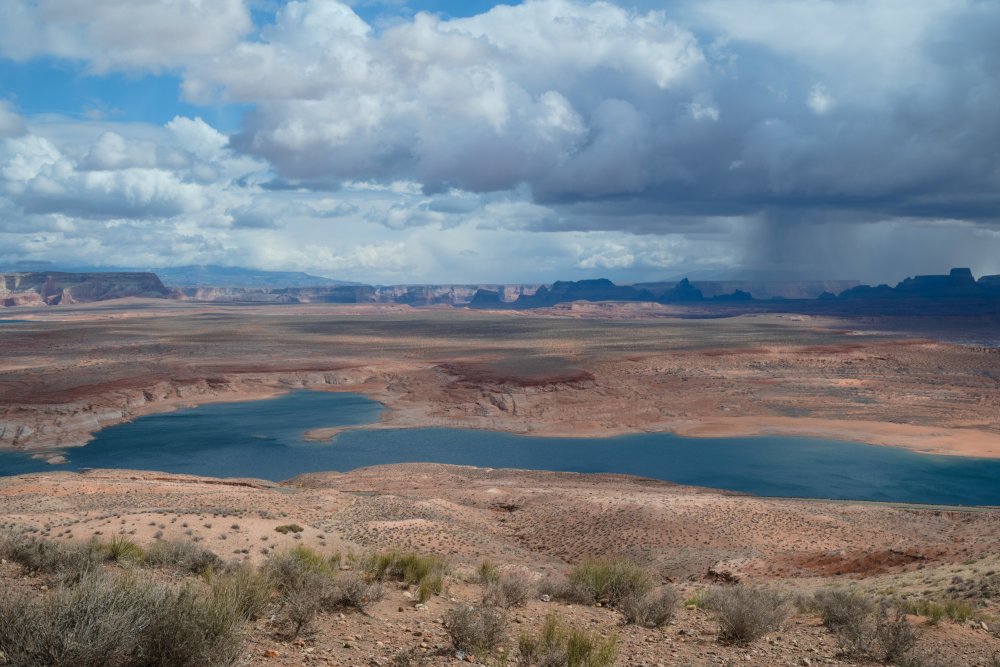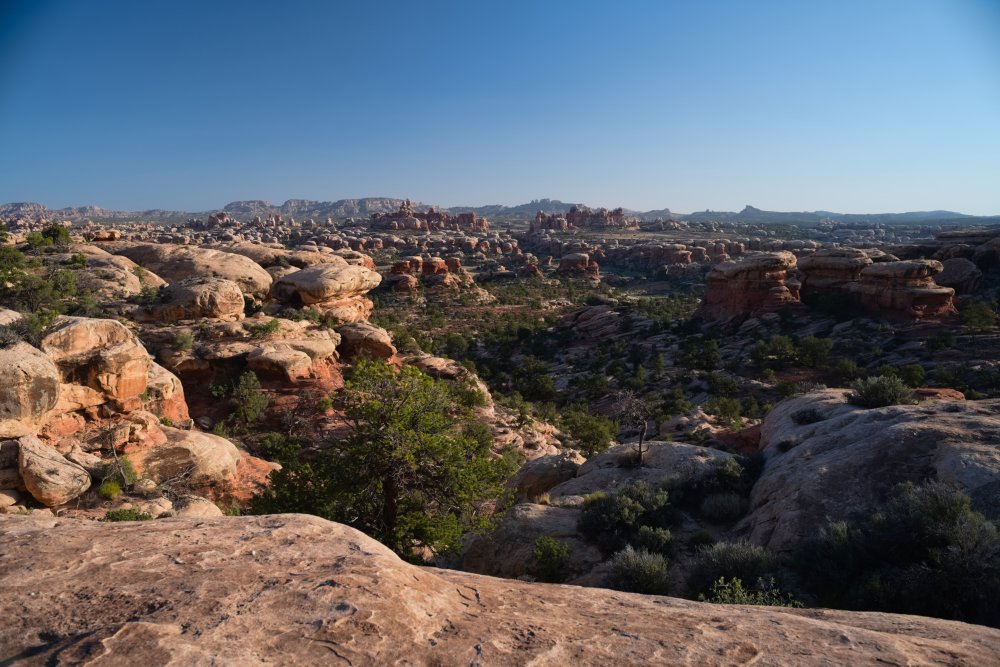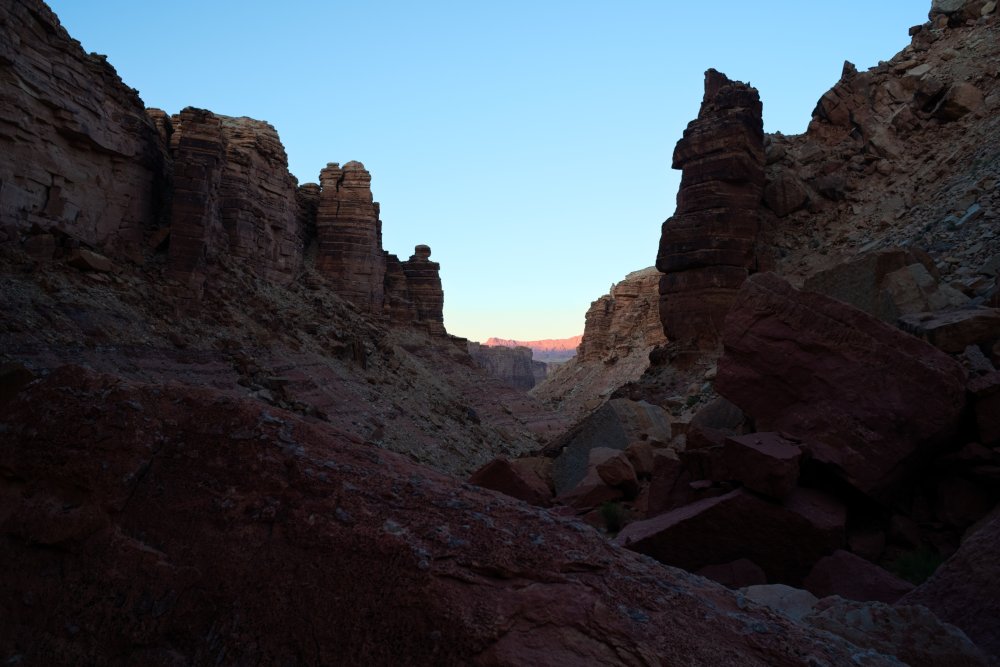
KnightsFan
Members-
Posts
1,353 -
Joined
-
Last visited
Content Type
Profiles
Forums
Articles
Everything posted by KnightsFan
-
It's been a while since I've been able to work on any kind of movie, but here are some recent landscapes photos. I'm not doing anything artistic, just trying to capture some of my favorite places the way they felt at the time. The only edits are very slight changes to saturation and exposure. 90% of my photos are from 10+ mile hikes so I only bring my lightweight 28mm and a CPL, but in this group is a rare photo taken from the roadside using a 24-105.
-
As much as subscription models suck for us individuals, they are often preferable for businesses, even regarding software like Adobe. Obviously Arri's target market is rental houses, and the comment earlier about a rental house passing those temporary upgrades to customers is quite likely the intent. It's worth spelling out the difference between subscription editing software and camera upgrades, though. With Adobe's product, if you stop paying, you can't open your old projects. In Arri's model, if you stop paying, you can presumably still open files shot with those upgrades. Losing access to the creative work that you've already done is a big difference.
-
There's a pretty big difference between one person stealing a screenplay or synopsis, and scraping the entire internet to make a generalized tool that billions of people use daily. Both can be unethical, but it's a few orders of magnitude difference in how many people it harms and to what degree. I believe that we should create technology for its own sake. I don't want to halt AI progress. There just needs to be a way to ensure that it benefits all people, particularly the people who (unwillingly/unknowingly) contributed to creating the models.
-
If you think that it is unethical to copy a commercial movie and personally sell those copies without the permission of the movie's owner, then it's hard to imagine how it could be ethical to use that same movie to train a model that is then sold without the permission of that movie's owner.
-
At no point in my life could I remotely imagine making a mess for someone else to clean up. I almost don't care about people making some noise in the theater at that specific moment--hey, it's not my type of movie, let the fans enjoy it their way--but people throwing shit on the floor makes me so angry. I think pop culture has shifted sharply towards factual, literal interpretations of stories. Our stories have become more about whether superhero A or superhero B would win in a fight, and less about what that conflict tells us about the characters, or more importantly, ourselves. Characters and stories are analyzed in terms of today's culture, rather than the movie world. It's in vogue to say, "well actually, don't date a guy like Mr. Darcy, because he only helped Lydia to get in Elizabeth's pants" ignoring that it's fantasy. Stories don't necessarily need the same ideology or moral code as real life--fantasy isn't only about a physical setting. The emotional meaning behind an action in a story doesn't necessarily match the emotional meaning behind that same action in the real world. And I think that 20-40 years ago, moviegoers accepted that kind of fantasy to a larger degree. It was normal for a movie to convey themes and values without requiring a literal relationship to modern-day themes and culture. Maybe another way to summarize is that subtext--both in terms of plot and theme--has become less common.
-
I don't know about that. Negativity is a whole industry that certainly draws in the views. Maybe not cammacky's style, I'm not familiar with him (I think I at least know who he is?), but a video critiquing every little thing about a product would definitely generate views. Gerald got a whole lot of buzz and an entire separate video's worth of views by saying rolling shutter was bad. There are plenty of channels that revolve entirely around saying how bad everything is.
-
I'm sure if someone made twice the camera for the same price as the S1II, he'd be all over it! I take it more to mean that he's content focusing on what he has instead of what he doesn't have, which I can respect.
-
Yeah, I'm just saying it's shape heavily favors photography, while the marketing and naming imply mostly video (and yes I think the same of the FX3 and 30). Sony's product page doesn't mention photos until near the bottom, and even then, it highlights that you can shoot photos in s-log3 to match your videos. Not that it matters. Like saying Blackmagic Pocket cameras don't fit in pockets. It seems like a great product.
-
I don't hate it. I'm not sure how I feel about the EVF. Can it be locked? I feel like it will move when I press it against my face. I refuse to call it a cinema or video camera though. This form factor sucks for video. But as a primarily photo hybrid, yeah, it looks like a decent value. I'd rather pay extra for an S1II, to be honest, if I was going to buy a brand new camera.
-
As someone who exclusively buys used, I agree with you-- however, features in new products are almost never objectively worth the premium, in any product category. Cameras, cars, graphics cards, clothes, music albums, and even digital video games on steam, if enjoyment is the value metric.
-
There's no chance I'll get one, but I don't think the S1II is that bad. Price is too high, but as I said a few pages ago, tariff disruptions drive all prices up. I'm curious whether the S1IIE uses the sensor from the S1 or from the S1II. It's quite a bit cheaper. Newsshooter says "partially stacked" for the S1IIE, and it has 4k120, so I wonder if it's got the faster readout of the S1II. If so, that's a decent discount for losing 5.1k60, raw, and DR boost, non of which I really care about, while (maybe?) keeping the features I like: faster readout, full size HDMI, 32 bit XLR adapter, and non-jangly neck trap loops.
-
The leaked price (if correct) might reflect tariffs and that uncertainty, in which case other manufacturers might raise prices on both new announcements and existing products. Value comparisons this year might not be as useful as usual.
-
Our "ally" in the USA just bazooka'd the UK film industry
KnightsFan replied to Andrew Reid's topic in Cameras
Do you think it applies to ad revenue collected from YouTube videos shot in another country? What about ad revenue from ads shot in other countries? Does Google pay the tariff on their ads, or does the advertiser pay it when they sell a product? Do you think it's about what is in the shot, or camera placement? Ie if I stand on the US side and film something across the border, is it a US shot or not? What if I place a giant mirror across the border and film it, giving the exact perspective of the camera being placed on the other side? Well Canada is the 51st state, so no tax. Obviously. -
I wrote a similar post earlier, maybe in this thread, but a hurdle to overcome in the US is that a significant portion of our population believes that the more credentials a person has, the less trustworthy they are. This includes professors, reporters, researchers, and other experts. It applies especially to those in academia or have higher education. If the head of the IRS with 20 years of experience says that more auditors leads to more revenue, and explains how auditors find discrepancies and why it takes time, and shows historical data to back it up, many Americans will automatically believe the opposite. If an anonymous dude in a Dinesh D'Souza doc says that a person he can't identify dumped 20 extra ballots in a mailbox, it's believed--not in spite of lack of rationality, but because of it. This isn't without analogy in the rest of the world. In some way, it's a logical extreme of believing that "street smarts" is better than "book smarts," which is commonly believed in many places, and is true in some situations. However, many Americans are aggressively uneducated, and ideologically see education itself as wrong. ("Education" here means a thought process that uses data and logic to draw conclusions, not knowledge of specific trivia). Personal truths, often derived from religion and specific personalities/influencers, are held to be truer than empiricism, the scientific method, and data, while any appeal to rationality is rejected as part of the deep state conspiracy that every academic is part of. Once a person intentionally rejects objectivity and rationality, their actions cannot be explained as being out of personal interest. They often actively vote against their personal interest, because their worldview rejects data and analysis. And, to be clear, there are still rational people here, including many Republicans and conservatives. But we've reached a critical mass of the voting public that we now have elected officials at every level, from local to president, who also reject rationality.
-
Stock market had a massive surge after most of the tariffs were paused. Imagine how much money you could make if you knew that would happen 30 minutes before it did. It's generally fascinating how much wealth is created or destroyed with no change in goods or services produced.
-
Blackmagic NAB 2025 Preview - 4th April 2025 4pm BST
KnightsFan replied to BTM_Pix's topic in Cameras
I saw that! I appreciate you coming back to this thread to let me know! -
The uncertainty really defeats many of the stated purposes. If the goal is to promote American manufacturing, manufacturers need to know that the tariff will be in place for their entire company's history. Even simple items like clothes take time to build large-scale manufacturing for--why would anyone invest in a factory if the tariff could be gone next year? Let alone complex items like cars or chips, the ones that we would actually want to build and export. I mean I don't necessarily look at low-tech industries and think, gee, I wish our country was built around competing with child labor sweatshops. Of course that's disregarding that the tariffs are also claimed to be leverage to get better deals (ie designed to be removed when a deal is struck) while simultaneously a source of federal revenue (ie designed to be permanent).
-
Now if only we could close business and rich person tax loopholes with the same efficiency
-
Blackmagic NAB 2025 Preview - 4th April 2025 4pm BST
KnightsFan replied to BTM_Pix's topic in Cameras
12ms is pretty acceptable. I sort of suspected it would be a bit slower. -
Blackmagic NAB 2025 Preview - 4th April 2025 4pm BST
KnightsFan replied to BTM_Pix's topic in Cameras
Same as I said about the UC12k, its big and heavy, and eats batteries. Used Alexa classics are so cheap, I'd rephrase and say that I'd get a Pyxis over an Alexa because cost isn't an issue. -
Blackmagic NAB 2025 Preview - 4th April 2025 4pm BST
KnightsFan replied to BTM_Pix's topic in Cameras
I'm sure that is true. Personally, cost isn't an issue between the Pyxis and UC12k. If they were equal price, I'd still pick the smaller Pyxis with smaller batteries, sacrificing ND. Conversely, I'd be stoked to pay a little more for a Pyxis with NDs that isn't as massive as the UC12k. Nothing is perfect, but the Pyxis 12k looks really close and, if I can manage to get my projects off the ground, is very likely to be the one we use anyway. Which is honestly surprising to me, considering they own Fairlight and own the braw format. They could do some pretty cool things with metadata, like keeping a raw 32 bit audio stream but applying EQ and other settings as metadata. Hopefully it's on their roadmap! I mentioned the H5studio in my last post, and the wireless receiver module. I'd love to see a similar 1st party solution on a camera. Cut out an audio recorder entirely, go straight from wireless transmitters to the camera. -
Blackmagic NAB 2025 Preview - 4th April 2025 4pm BST
KnightsFan replied to BTM_Pix's topic in Cameras
Fantastic announcement! I'm not a fan of the side screen, and I don't need 12k or even 8k, but a $5k FF camera with <10ms rolling shutter in high quality codecs and (subjectively) amazing color is sweet! Although I suppose we don't know for sure whether the readout speed is the same as the UC12k. The two additions that I would like are NDs and 32 bit dual gain audio. Ideally, NDs could be handled with an L mount version of this. https://www.metabones.com/products/details/MB_NDEF-E-BM7. 32 bit audio is of course very easy with the minor annoyance of syncing in post. Another recent announcement was the H5studio, which has a builtin wireless receiver module, which I find extremely interesting. So all things considered, this basically hits everything I'd want from a cinema camera, with a few accessories. While probably not something I would get, I'm quite impressed with the camcorder handle and grip. What a great idea (this is me patting myself on the back--I 3D printed something similar for my Z Cam. Of course mine was shit execution, but it was the same idea). -
Yeah, I picked that example as something that I think can genuinely be debated, as opposed to fossil fuels and climate change. I'm very liberal, but its clear that simply forgiving loans has led to higher administrative costs in our education system--if we want to make it easier for students, forgiving loans with no other system changes is bad long term. And we can obviously find different potential solutions that allow people to get education that they want or need, without adding extra administrative costs to taxpayers. So yes, I agree with everything you said, but I do think that there is a basic level of understanding the world that is willfully lacking among many on the right, with the willful part being key. There's a rebellion against rationality, logic, and understanding among my friends and family on the right, of which I have many. The very idea of gathering facts and using them to make an informed decision is a symptom of the Liberal Elites, and any attempt to do so is talking down. So I agree with everything you say, but my thesis is that many of those people who are looking for a life jacket believe that the process of sitting down and figuring out how to get a life jacket, is wrong. The one positive thing I will say about tariffs, is that if higher prices lead to less consumption of useless goods, I'm all for it. Hopefully food and basic necessities can be left out of price hikes. Ideally we could find a way to keep people's first car nice and cheap. But if fewer people buy 2nd and 3rd cars, and we spend less energy building and throwing out shit we don't need, that is a good thing. Just wish there was more of a thoughtful plan.
-
Blackmagic NAB 2025 Preview - 4th April 2025 4pm BST
KnightsFan replied to BTM_Pix's topic in Cameras
Oh, cool! I'm super excited! One of my primary hesitations about the Pyxis was rolling shutter, but CineD tested the 12k sensor at just 5.5ms in 8k and 4k, more than fast enough. My writing partner and I are considering the UC 12k for our next project, but frankly, a Pyxis body fits a small crew better. If it's identical to the Pyxis with that sensor for $5k or less, it may be a winner for us! (Our other ideas at the moment are: used Red Komodo for ~$2.8k, or C500 Mk II for ~$5.2k, with the obvious benefit of the C500 being NDs + included EVF) -
Agreed, but a large part of the reason people feel that they are being talked down to is because they are wrong about facts, and then any attempt to explain those facts is perceived as being talked down to. There is a large range to how much "opinion" is in a given "fact". So I'm not talking about, "forgiving student debt will lead to a better economy," as that is not as clear a fact. But it is difficult to discuss whether burning fossil fuels contribute to climate change, or whether reducing the size of the IRS will lead to fewer taxes being collected--all without hurting the feelings of someone who is dead set on being factually wrong.







